
The Basics of Managing a Dosimetry Program
Managing a dosimetry program requires a lot of knowledge and time, from understanding state and federal regulations to various procedures around the wearing of dosimeters and reporting on dose. RSOs and IRRPs can protect staff from radiation exposure by having a comprehensive Radiation Protection Program (RPP) that abides by governmental regulations, adheres to ALARA principles, and follows national and state safety standards. In this article, we’ll review the vital basics of how to manage a dosimetry program.
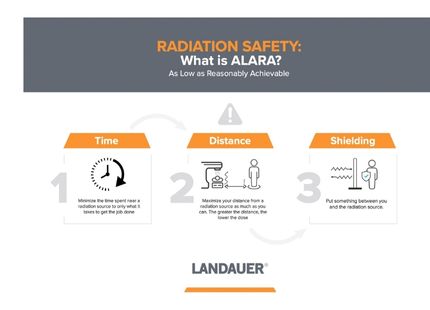 Each facility that incorporates ionized radiation exposure into patient treatment is subject to state laws and regulations and is required to develop and implement a unique RPP specific to the scope of activities provided. The RSO and IRRP protect their staff from exceeding radiation exposure levels by following a comprehensive RPP. The RPP must cover the full range and extent of use of ionizing radiation to ensure compliance with the regulations and be able to document and prove that any exposure is “as low as reasonably achievable” (ALARA).
Each facility that incorporates ionized radiation exposure into patient treatment is subject to state laws and regulations and is required to develop and implement a unique RPP specific to the scope of activities provided. The RSO and IRRP protect their staff from exceeding radiation exposure levels by following a comprehensive RPP. The RPP must cover the full range and extent of use of ionizing radiation to ensure compliance with the regulations and be able to document and prove that any exposure is “as low as reasonably achievable” (ALARA).
There is an administrative arm to the ALARA program with common ALARA levels. However, you should ensure that the ALARA levels you have set for Level 1 and Level 2 are specific to your program. In addition, your RPP should discuss the actions to be taken if the limits are exceeded in a quarter or annually. In many programs, exceeding a Level 1 limit typically results in a letter calling attention to the issue. Exceeding Level 2 would launch an investigation.
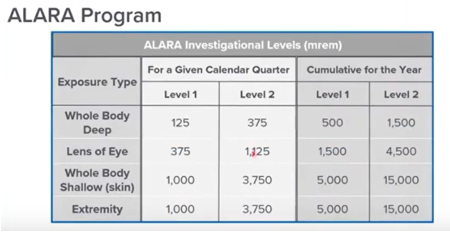 The RPP must reflect the scope of the license or registration, including training, approved procedures, and engineering controls for occupational exposure. Often the content of the RPP is available in templates to help you create the document. Some states have tighter regulations than others, so it is imperative that the RSO check with their state for what is required. State regulatory boards may require deeper data to establish thresholds for radiation exposure than the NRC.
The RPP must reflect the scope of the license or registration, including training, approved procedures, and engineering controls for occupational exposure. Often the content of the RPP is available in templates to help you create the document. Some states have tighter regulations than others, so it is imperative that the RSO check with their state for what is required. State regulatory boards may require deeper data to establish thresholds for radiation exposure than the NRC.
One of the main components of the RPP is determining who is monitored for exposure levels while working with radiation. The accepted levels are:
- Adults: >10% of annual regulatory limits
- Minors < 18 years: >100 mrem/year
- Declared Pregnant Worker: > 100 mrem / gestational period
- Radiation workers exposed to medical fluoroscopy
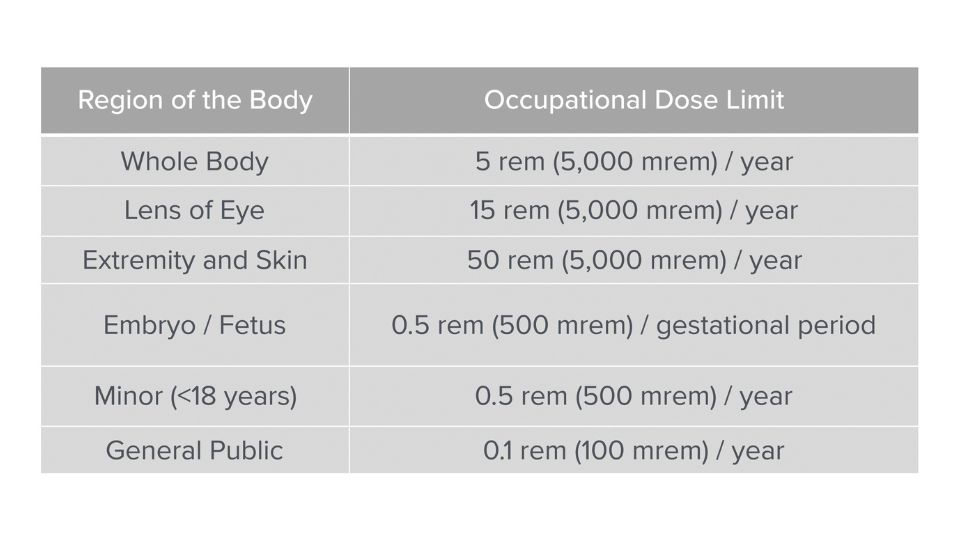 The RSO and IRRP are responsible for an RPP that monitors radiation exposure and provides the necessary tools to help protect the workers in a facility. Those tools include Personal Protection Equipment (PPE) like lead aprons, control booths that shield the workers from radiation, and monitoring devices such as dosimeters.
The RSO and IRRP are responsible for an RPP that monitors radiation exposure and provides the necessary tools to help protect the workers in a facility. Those tools include Personal Protection Equipment (PPE) like lead aprons, control booths that shield the workers from radiation, and monitoring devices such as dosimeters.
Simply put, dosimeters are devices that measure an absorbed dose of ionizing radiation. They are specific to the individual being monitored and contain a record of the radiation dose received by that person.
Selecting the Correct Dosimeters
LANDAUER dosimeters are sophisticated devices with advanced technology that will help IRRPs and RSOs manage radiation exposure and stay within the strict regulatory standards of the NRC and state agencies. LANDAUER offers the full spectrum of dosimeters to address every need in a radiation program. These include dosimeters like the Luxel+ badge, the Saturn Ring, and the Vison lens of eye dosimeter.
The Luxel+ Dosimeter
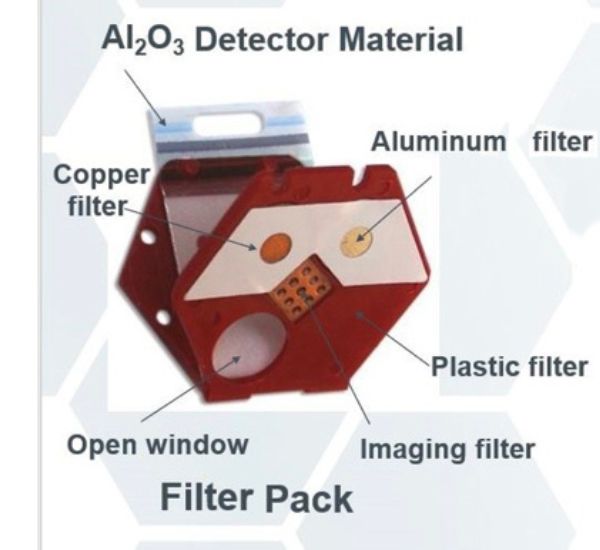 The Luxel+ dosimeter uses OSL technology, meaning it has a strip of aluminum oxide sandwiched between a four-element filter pack. It is heat sealed and tamper-proof. (It also has an option for a CR-39 component for neutron monitoring.)
The Luxel+ dosimeter uses OSL technology, meaning it has a strip of aluminum oxide sandwiched between a four-element filter pack. It is heat sealed and tamper-proof. (It also has an option for a CR-39 component for neutron monitoring.)
Selected frequencies of laser light stimulate the aluminum oxide; it luminesces in proportion to the amount of the radiation dose and the intensity of the stimulation light. The luminescence is then measured and applied to a dose algorithm to determine exposure results. Far superior to the old film badge and TLD dosimeters, it has a lower 1 mrem threshold for more accuracy, and the data can be re-analyzed and reprocessed if needed.
The Luxel+ has filters that provide qualitative information about conditions during exposure. These filters can be measured to identify static or dynamic exposures and contamination conditions. Static conditions show a distinct grid pattern that indicates no movement. That could mean the badge was left somewhere (on a hanging lead apron or on a counter) and was exposed to radiation. A dynamic filter shows a blurred grid which indicates it was worn by an employee and is a valid reading. The badges can be exchanged anywhere from bi-weekly to annually, with monthly or quarterly being the most common. The frequency you choose will coincide with your ability to execute your ALARA program efficiently.
The Luxel+ dosimeter exterior shows essential information and should only be worn by the person to whom it has been assigned. At a glance, you know:
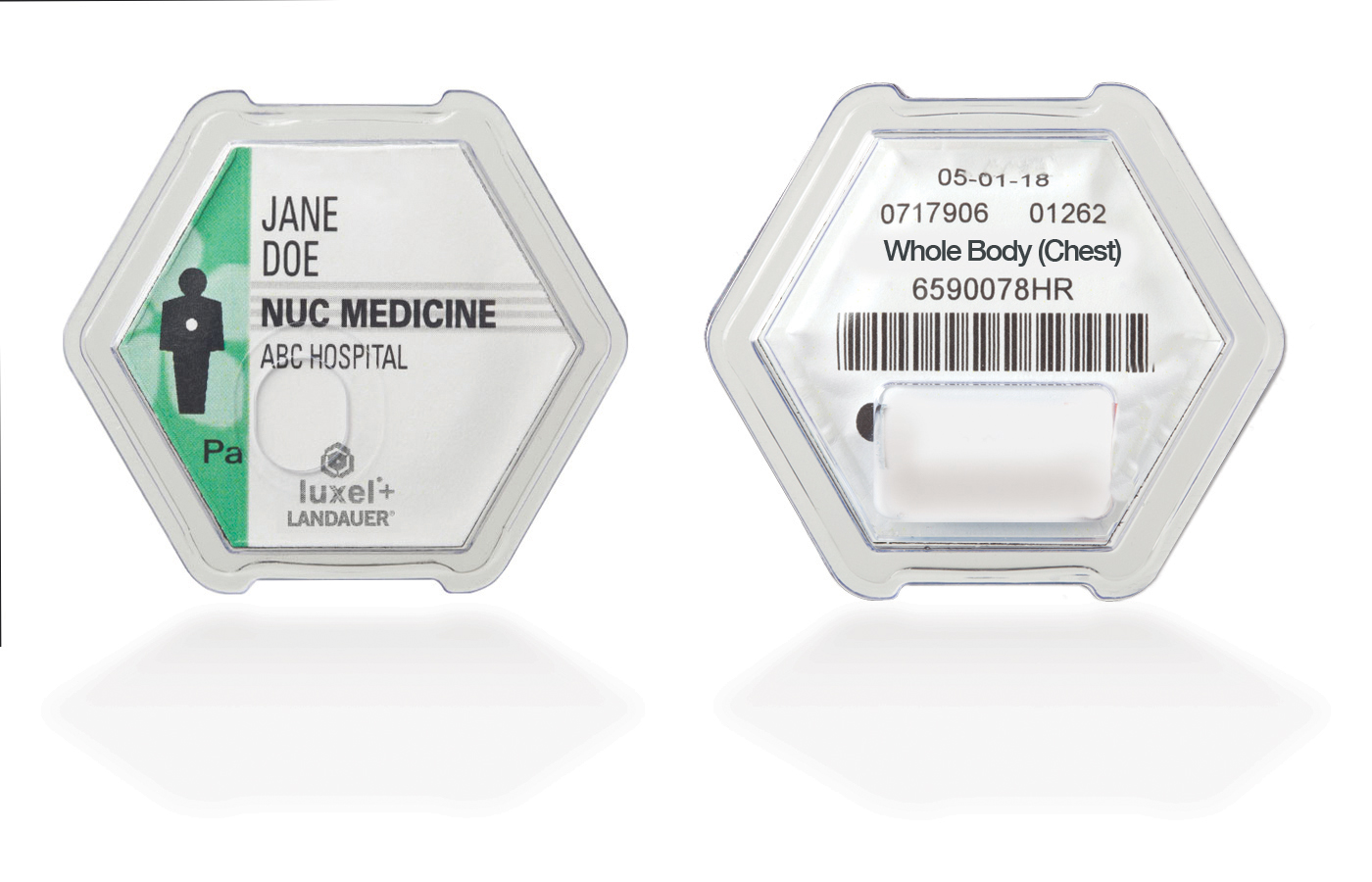 The name of the participant
The name of the participant- Their department and location
- The name of the facility
- ID numbers for the facility and the individual
- A visual graphic indicating the wear period
- The date of the current wear period
The Saturn TLD Ring
Worn on the finger, the Saturn TLD Ring contains several lithium fluoride crystal chips. When exposed to radiation, the crystals are heated, and visible light is emitted in proportion to the ionizing radiation exposure. 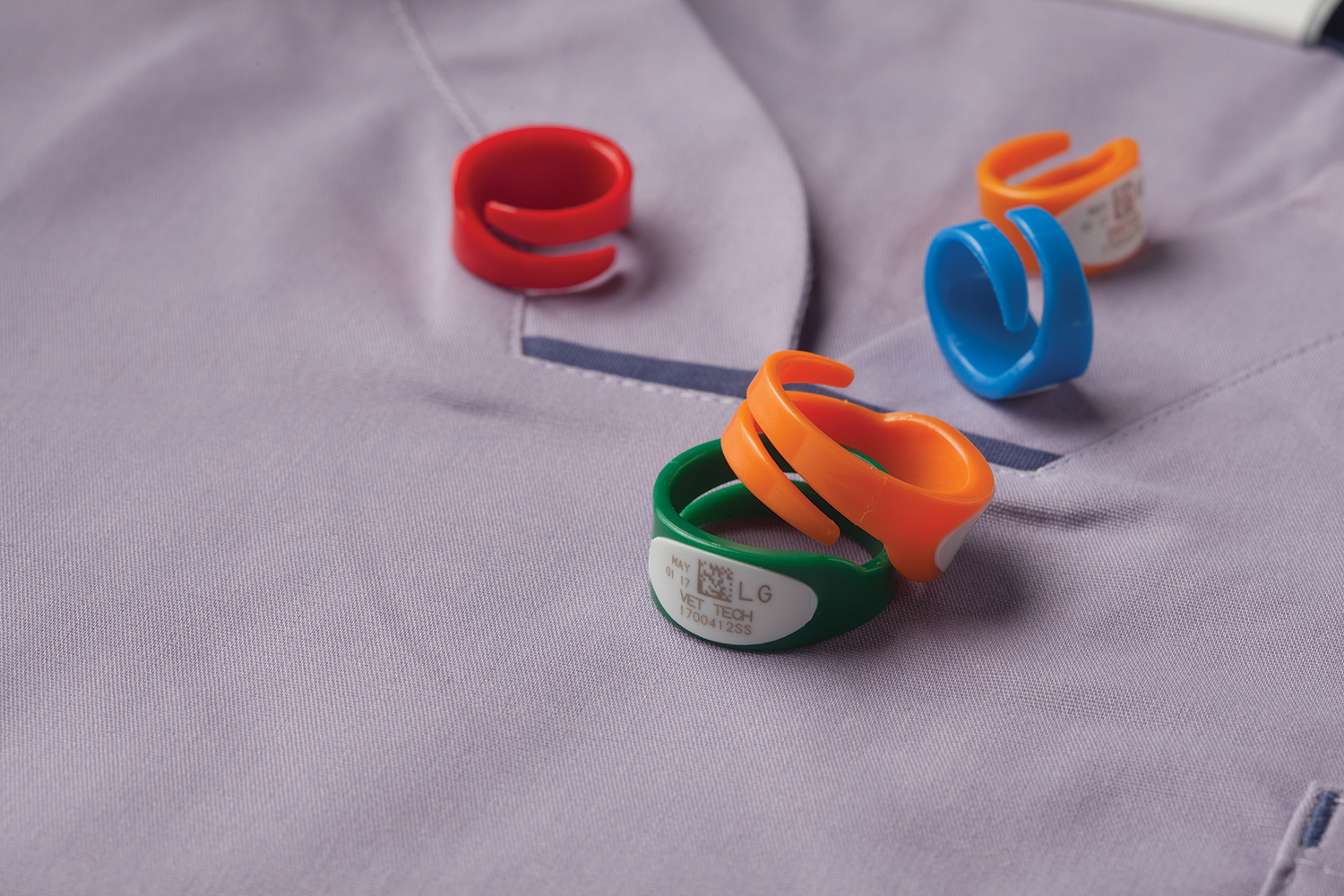 The minimum reading is 10 mrem. The Ring captures shallow doses of radiation to the extremities. It should be worn on the index or middle finger, with the white label facing the palm and under gloves to prevent contamination. Size is important as it should fit comfortably and not be too tight or loose. The color of the ring indicated the wear period set by the RPP.
The minimum reading is 10 mrem. The Ring captures shallow doses of radiation to the extremities. It should be worn on the index or middle finger, with the white label facing the palm and under gloves to prevent contamination. Size is important as it should fit comfortably and not be too tight or loose. The color of the ring indicated the wear period set by the RPP.

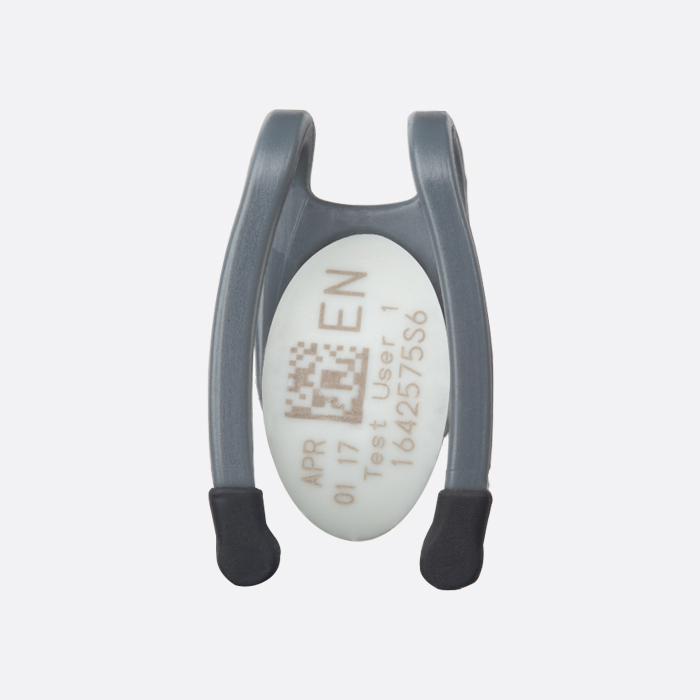 Vision Dosimeter
Vision Dosimeter
Small and compact, the Vision Dosimeter contains a single lithium fluoride chip and monitors prolonged exposure of the eyes to radiation. Lightweight, it clips directly to eyeglasses, visors, face shields, or caps.
Fetal Monitoring
Fetal monitoring needs to be detailed the RPP as a separate policy. A declared pregnant worker (DPW) is not required to complete a declaration of pregnancy. It is entirely voluntary. 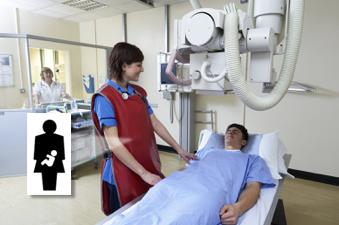 Once the written declaration is completed, a fetal monitor is ordered and must always be worn under PPE by the DPW. The exposure limit is 500 mrem for the gestation period. Many of the regulatory agencies have a 50 mrem a month guideline. The exchange of the fetal dosimeter for analysis is always monthly. At the end of the pregnancy, two steps must be taken by the IRPP or RSO: 1) cancel the fetal dosimeter and 2) provide the date of the end of the pregnancy.
Once the written declaration is completed, a fetal monitor is ordered and must always be worn under PPE by the DPW. The exposure limit is 500 mrem for the gestation period. Many of the regulatory agencies have a 50 mrem a month guideline. The exchange of the fetal dosimeter for analysis is always monthly. At the end of the pregnancy, two steps must be taken by the IRPP or RSO: 1) cancel the fetal dosimeter and 2) provide the date of the end of the pregnancy.
Spare Dosimeter
Most facilities keep a few spare dosimeters available which gives the RSO the ability to assign them to new employees or if an employee loses one before the regular exchange occurs. Occasionally, one is issued to a non-radiation employee who might have a possibility of exposure, like environmental service staff cleaning a radiation room.
Dosimeters for Fluoroscopy
CT scans or X-rays provide a one-time snapshot of a medical condition. Fluoroscopy shows continuous X-ray images on a monitor and is typically used to evaluate and diagnose a heart or intestinal issue. When conducting a fluoroscopy session with a single dosimeter, the device is worn outside the PPE at the collar level. When using double dosimeters, the collar device is worn outside the PPE, and the chest device is worn under the PPE.
The data on the dosimeter then undergoes a correction called effective dose equivalent (EDE2 or EDE1). EDE is an adjustment to the exposure on the dosimeter to calculate a better estimate of what the whole-body radiation was to the worker because the shielding PPE provided attenuation. Some states permit this correction, so it’s important to check the regulations for this type of dose correction.
Operational Elements
Guidelines for the use of any dosimeter need to be followed by all medical staff to maintain the integrity of the data captured and to keep reports of radiation exposure accurate.
- Only wear at the place of employment that issued the dosimeter
- Keep the face of the dosimeter towards the radiation source
- Occupational exposure only, not for a patient undergoing a procedure involving radiation exposure
- Remove the dosimeter when not using radiation equipment; moving around leads to a less accurate reading
- When not in use, store in a low radiation environment
- Do not take home
The frequency of exchanging the dosimeters is outlined in the RPP. It depends on how much radiation the staff is exposed to regularly and how many dosimeters the facility uses. The most common timeframes are monthly and quarterly. When returning dosimeters to LANDAUER for analysis and reports, there are important operational steps to take:
- Always keep track of your inventory of dosimeters
- Review any NRC forms for employees who worked elsewhere in a calendar year to manage their exposure at your facility
- A timely exchange strengthens the program and tracks the data for a wear period
- Return ALL dosimeters at the end of each wear period, even the spares that haven’t been used
- If an employee uses a spare, do not return the device until the replacement is received
- Use the package insert, bar code, prepaid mailer, and any other elements to be sure your dosimeters are properly recorded and analyzed when received by LANDAUER. Be sure to display a warning on the outside of the package prominently:
- “Monitoring devices enclosed, keep away from Radiation”
- “Do not X-Ray, X-Ray Badges Enclosed”
- LANDAUER will communicate any changes approximately 25 days before the next wear period
LANDAUER provides excellent support to RSOs and IRPPs for all customers. As a LANDAUER customer, you have access to our portal (myLDR) to access reports and track results online, plus a phone number to call if you need to speak directly to an expert. Our goal is to help you manage your dosimeter data and help you stay within the regulatory guidelines set by your state and the NRC.
